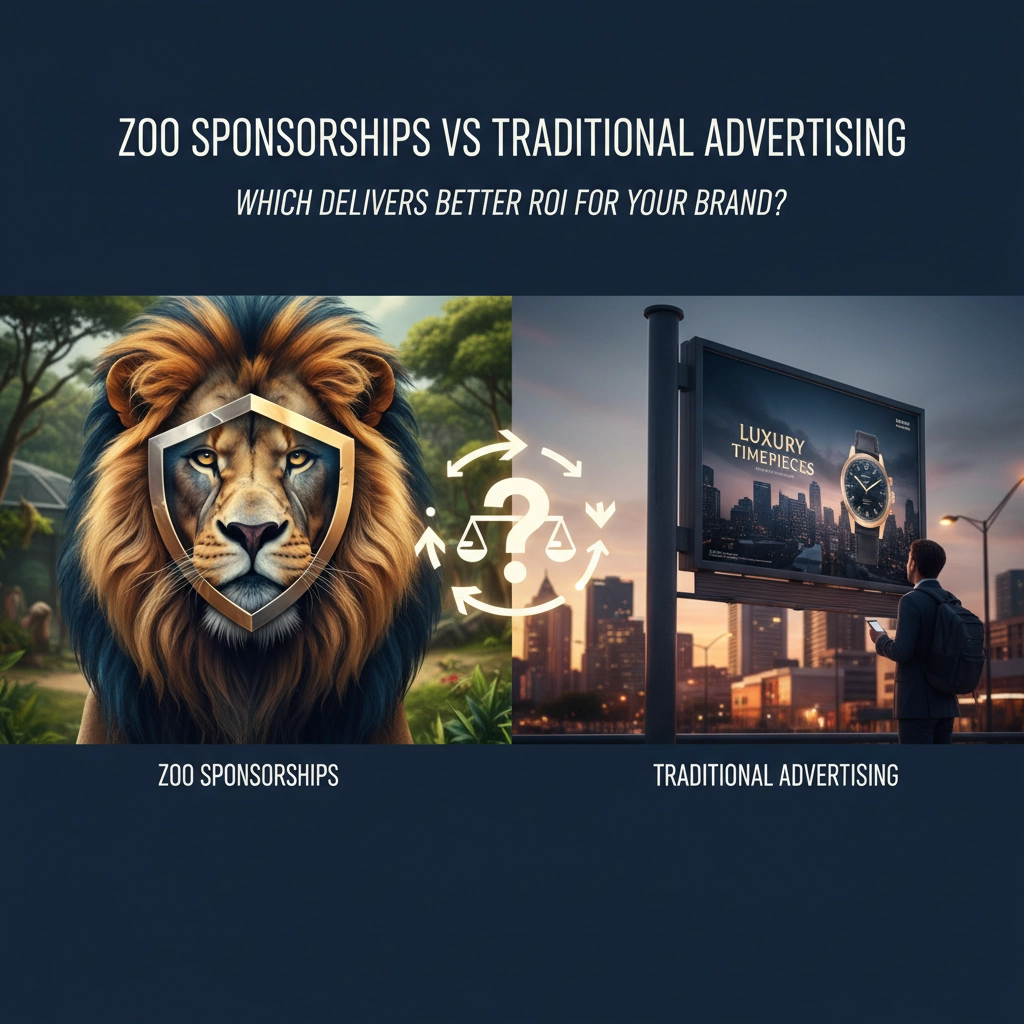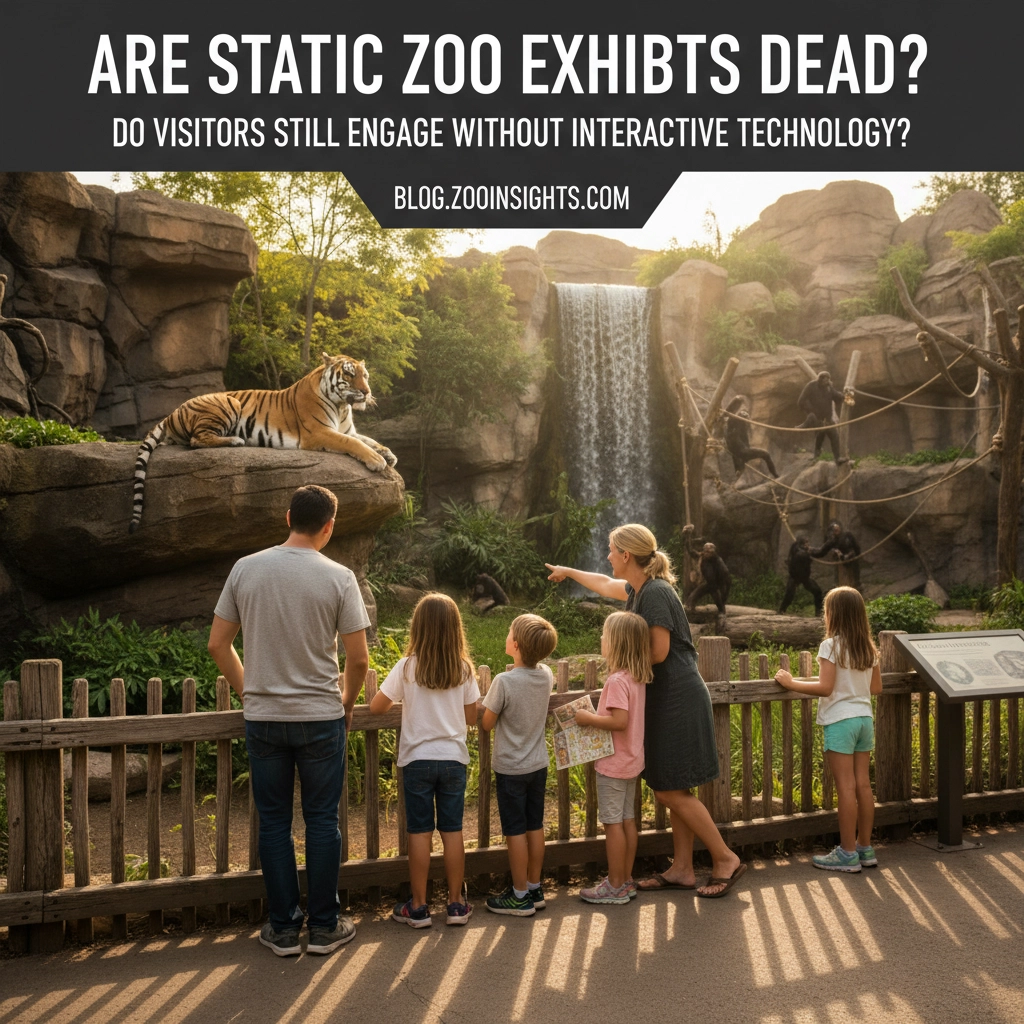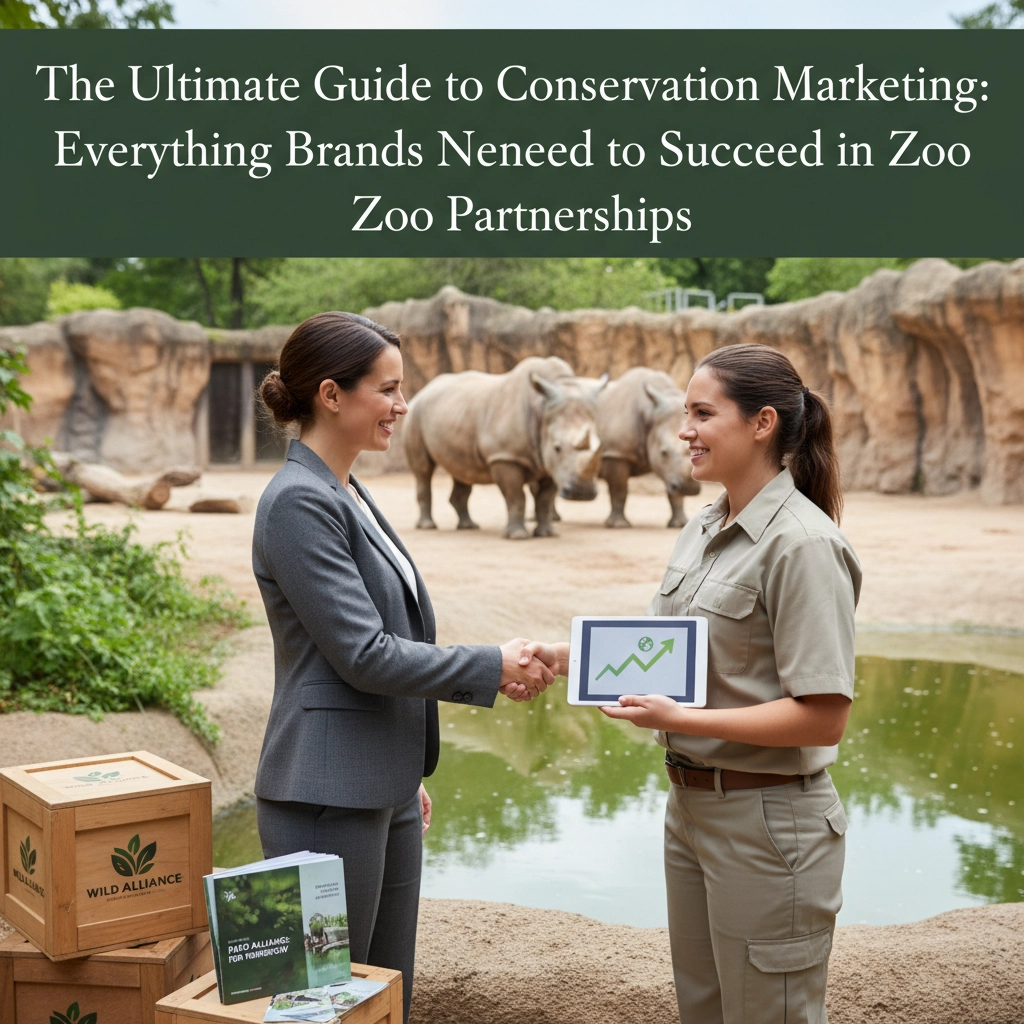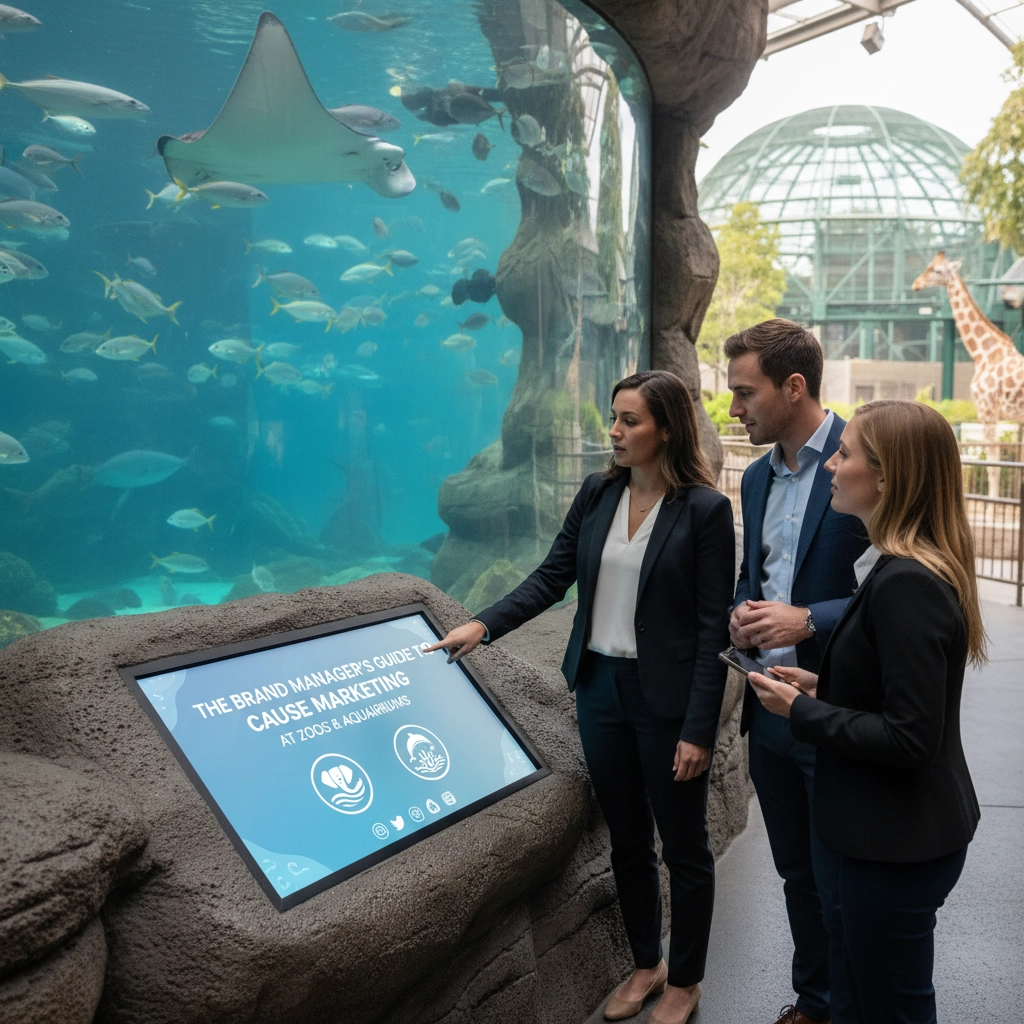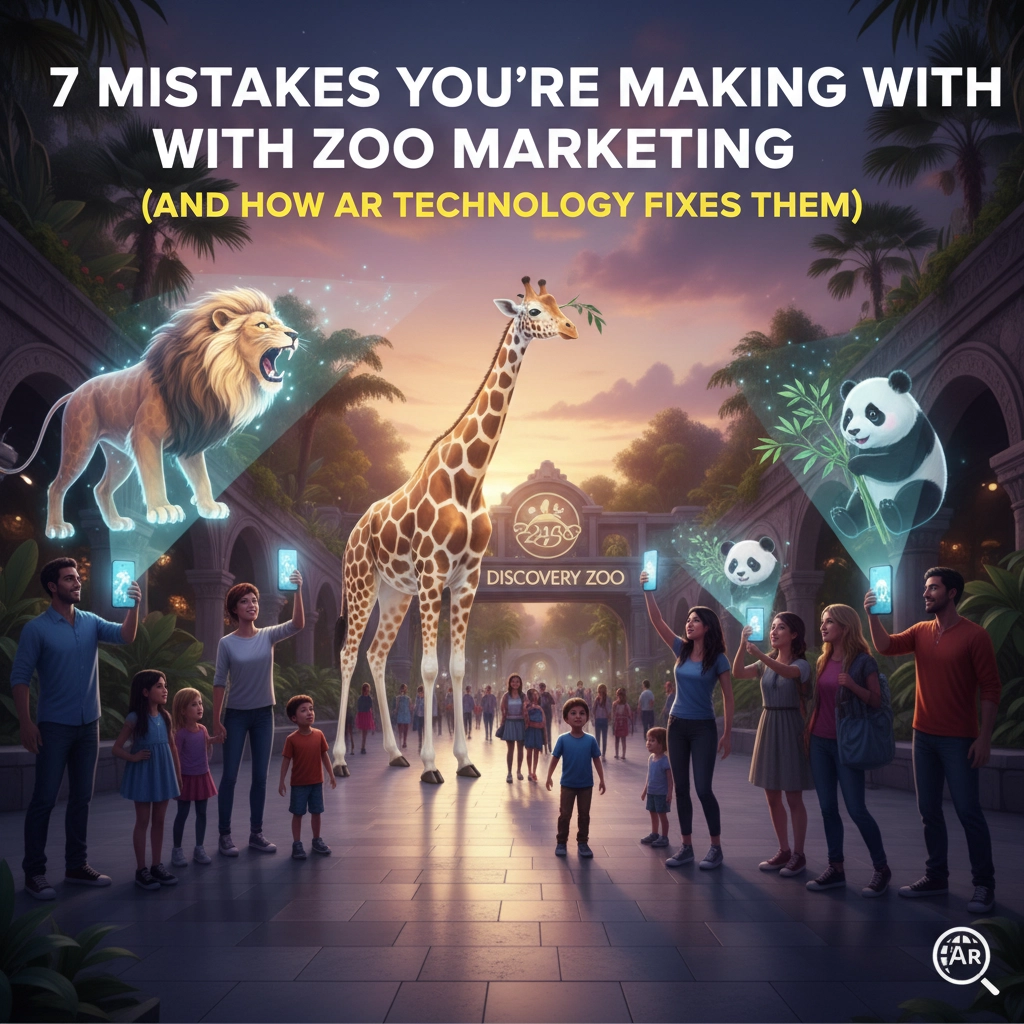When it comes to maximizing your marketing budget, the eternal question remains: where should you invest your advertising dollars for the best return? Today's brands face an increasingly complex landscape where traditional advertising competes with innovative sponsorship opportunities. Zoo sponsorships have emerged as a compelling alternative that's reshaping how companies think about ROI.
The numbers tell a fascinating story. Recent industry data shows that targeted sponsorship campaigns can achieve media value-to-spend ratios exceeding 100:1, while traditional advertising struggles to maintain cost-effectiveness in an oversaturated market. But which approach truly delivers better ROI for your brand?
Understanding Zoo Sponsorships: More Than Just Logo Placement
Zoo sponsorships represent a fundamental shift from passive advertising to active community engagement. Unlike traditional advertising that interrupts consumer experiences, zoo partnerships integrate your brand into positive, educational environments where families and community members are already engaged and receptive.
The Strategic Advantage
Modern zoo sponsorships offer measurable returns through advanced tracking systems that monitor clicks, engagement rates, and consumer actions. This data-driven approach allows brands to justify spending with concrete metrics rather than relying on estimated impressions or viewership numbers.
Consider the typical investment structure: street banner sponsorships average $15,000 annually, while comprehensive tram signage packages require $15,000 per year with three-year commitments. These investments provide consistent brand exposure to thousands of visitors who encounter your company name on exhibits, maps, and promotional materials throughout their experience.
Beyond Traditional Metrics
Zoo sponsorships excel in creating emotional connections. Visitors associate your brand with positive values like education, conservation, and family experiences. This emotional resonance translates into enhanced credibility and trust – invaluable assets that traditional advertising struggles to achieve at comparable costs.

The Traditional Advertising Reality Check
Traditional advertising, particularly television and digital display advertising, continues to offer broad reach and immediate exposure. However, the landscape has shifted dramatically in recent years.
Declining Effectiveness
Consumer behavior has fundamentally changed. Ad blockers, streaming services, and shortened attention spans have reduced traditional advertising's impact. While TV advertising still provides predictable reach, engagement levels continue to decline as audiences become increasingly resistant to interruptive marketing messages.
Cost Considerations
Traditional advertising often requires significant upfront investments with limited guarantee of engagement. A 30-second TV spot during prime time can cost tens of thousands of dollars for a single airing, reaching a broad but potentially uninterested audience.
The creative control advantage of traditional advertising – allowing brands to dictate exact messaging, timing, and presentation – comes at the expense of authentic audience connection and long-term brand building.
ROI Analysis: The Numbers Don't Lie
Sponsorship Performance Metrics
Research indicates that well-executed sponsorship campaigns achieve average media value-to-spend ratios of 3:1, with exceptional targeted events reaching 100:1 ratios. Zoo sponsorships specifically benefit from:
- High Engagement Rates: Visitors spend 2-4 hours in zoo environments, providing extended brand exposure
- Targeted Demographics: Family-oriented audiences with disposable income and community involvement
- Positive Brand Association: Alignment with education, conservation, and family values
- Measurable Interactions: Direct tracking of website visits, social media engagement, and promotional responses
Traditional Advertising Performance
Traditional advertising metrics focus primarily on reach and frequency, offering limited insight into actual consumer behavior or purchase intent. While impressions may be high, engagement rates continue to decline across most traditional channels.

The Creative Flexibility Factor
Zoo sponsorships provide unique opportunities for innovative marketing approaches that extend far beyond simple logo placement. Brands can develop:
- Interactive Exhibits: Hands-on experiences that engage visitors while showcasing products or services
- Educational Programs: Sponsored workshops or presentations that position your brand as a thought leader
- Digital Integration: QR codes, mobile apps, and social media campaigns that bridge offline and online experiences
- Event Partnerships: Seasonal celebrations, fundraisers, and special programs that create memorable brand associations
Traditional advertising's creative flexibility is limited to predetermined formats and time constraints, reducing opportunities for meaningful consumer interaction.
Long-Term Brand Building vs. Short-Term Exposure
Sponsorship Advantages
Zoo partnerships build lasting relationships with communities. Your brand becomes part of the fabric of positive local experiences, creating loyalty that extends beyond individual campaigns. Multi-year commitments allow for deeper integration and more sophisticated marketing approaches.
Traditional Advertising Limitations
Traditional campaigns typically focus on short-term awareness bursts. Once the campaign ends, brand presence disappears until the next media buy. This approach requires continuous investment to maintain visibility without building lasting community connections.

Making the Strategic Choice
Choose Zoo Sponsorships When:
- Your target audience includes families and community-minded consumers
- Building long-term brand credibility is a priority
- You want measurable engagement metrics beyond impressions
- Creative marketing opportunities align with your brand values
- Budget allows for sustained partnership investments
Consider Traditional Advertising When:
- Immediate broad market reach is essential
- Campaign timing requires precise control
- Budget constraints limit long-term sponsorship commitments
- Your message doesn't naturally align with educational or conservation themes
The Hybrid Approach: Maximizing Impact
The most successful brands combine both strategies strategically. Zoo sponsorships provide the foundation for community trust and deep audience connections, while selective traditional advertising amplifies specific campaigns or reaches broader markets when needed.
This complementary approach leverages sponsorship's emotional connection and cost-effectiveness while maintaining traditional advertising's broad reach capabilities. The key is understanding when each approach delivers maximum value for your specific objectives.
Industry Insights and Future Trends
The advertising industry is shifting toward authentic engagement models. Consumers increasingly value brands that demonstrate genuine community involvement rather than simply purchasing visibility.
Zoo sponsorships represent this evolution, offering transparency, measurability, and authentic connection that traditional advertising cannot match. As tracking technology improves and consumer expectations continue to evolve, sponsorship models will likely expand their advantage over traditional approaches.

Measuring Success: Key Performance Indicators
Sponsorship KPIs:
- Brand recall and recognition rates
- Website traffic from zoo-related campaigns
- Social media engagement and mentions
- Lead generation and conversion rates
- Community sentiment and brand perception
Traditional Advertising KPIs:
- Reach and frequency metrics
- Cost per thousand impressions (CPM)
- Click-through rates for digital campaigns
- Brand awareness lift studies
The comprehensive nature of sponsorship metrics provides clearer insights into actual consumer behavior and purchase intent, making ROI calculations more accurate and actionable.
Strategic Implementation
Successfully implementing zoo sponsorships requires understanding your target audience's values and interests. Brands that align naturally with education, family experiences, or environmental conservation typically see the strongest returns.
The key to maximizing ROI lies in developing integrated campaigns that extend beyond the zoo environment. Social media integration, email marketing, and community event tie-ins multiply the impact of your sponsorship investment.
Conclusion: The ROI Decision
Zoo sponsorships consistently outperform traditional advertising in cost-effectiveness, engagement depth, and long-term brand building. While traditional advertising maintains advantages in immediate reach and creative control, the measurable returns and authentic connections of sponsorship partnerships make them increasingly attractive for brands seeking sustainable growth.
The decision ultimately depends on your specific objectives, target audience, and budget constraints. However, for brands prioritizing long-term relationship building and measurable engagement, zoo sponsorships offer compelling ROI advantages that traditional advertising struggles to match.
Ready to explore how Zoo Media can help maximize your advertising ROI through strategic sponsorship partnerships? Contact our team to discover the opportunities that align with your brand objectives and budget requirements.
Ready to elevate your brand's impact? Contact Dan Kost, CEO, and discover how Zoo Media's innovative advertising solutions can transform your marketing ROI. Visit www.dakdan.com or call our AI Receptionist at +1 (323) 676-0621 to schedule your strategic consultation today.
#Advertising #Marketing #ROI #Sponsorship #BrandStrategy #ZooMedia #DigitalMarketing #CommunityEngagement

